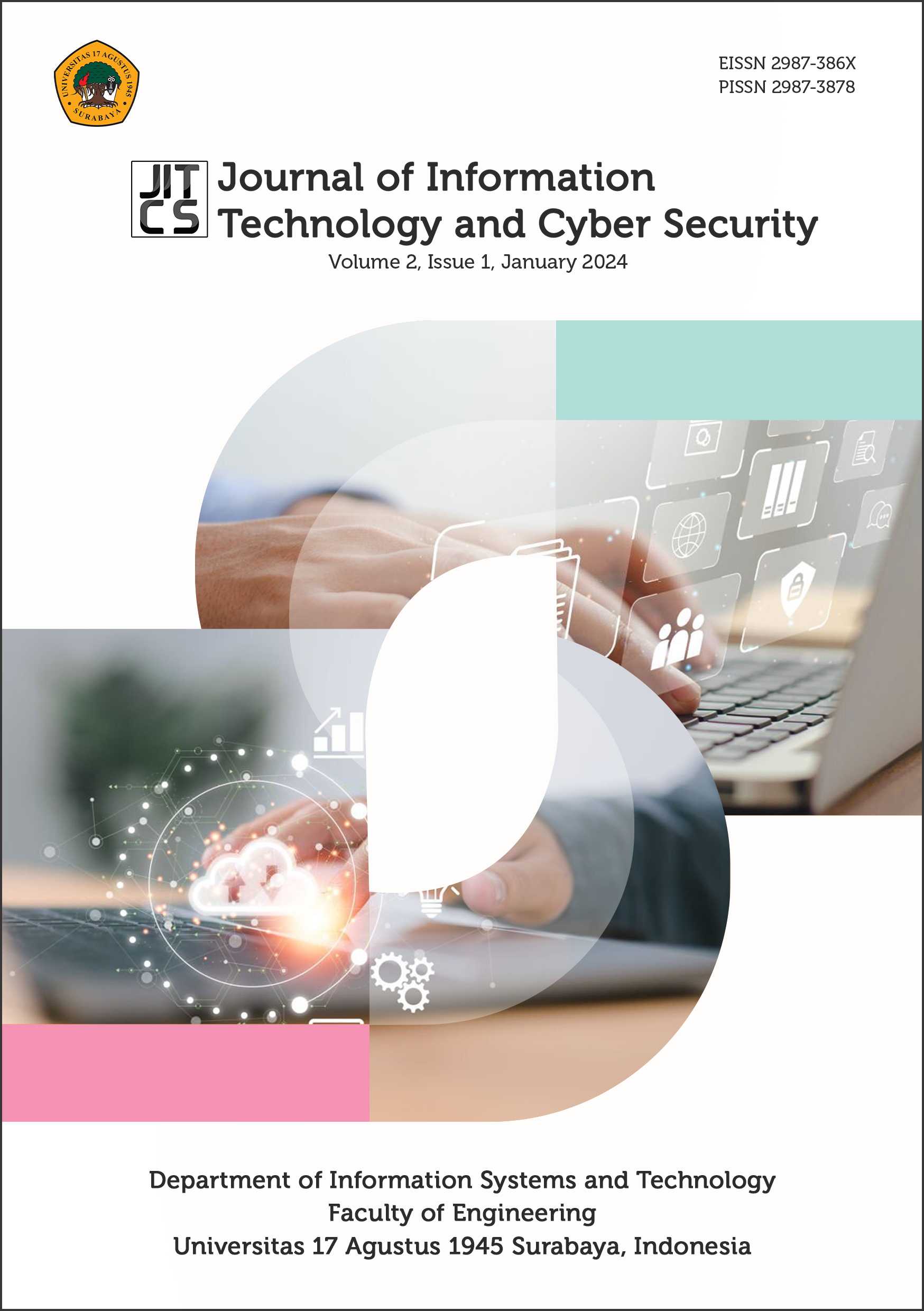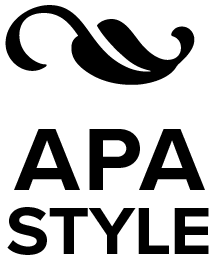Classification Techniques in Finding Malignant Breast Cancer Detection
Abstract
The most fundamental aspect of cancer is that it is marked by abnormal and uncontrolled cell growth, allowing it to spread to the surrounding areas of existing tissues. One of the most common cancers experienced by people in Indonesia, according to the Indonesian Ministry of Health, is breast cancer. The diagnosis of diseases, especially cancer, also requires a visual form that is later used as an image to determine the condition within the patient's organs. The use of mammography images is one implementation of X-rays aimed at revealing the structure of human bones and tissues. The use of images is also recognized in information technology in the field of digital image processing, which is useful for analyzing, enhancing, compressing, and reconstructing images using a collection of computational techniques. One application of digital image processing techniques for breast mammography images is recognizing the possibility of breast cancer through computer automation using classification methods supported by googlepredict.net architectures. The results obtained in this study use a dataset sourced from King Abdul Aziz University, totaling 2378 images. The method used in this research is Convolutional Neural Network (CNN), with the addition of the GoogleNet architecture. The convolution extraction method runs with the GoogleNet architecture, enhancing deep learning for optimal breast cancer recognition. The overall results of this study found an average precision value of 90%, recall of 92%, F-1 Score of 91.49%, and accuracy of 91.49%.
Downloads
References
American College of Radiology. (2014). 2013 ACR BI-RADS Atlas: Breast Imaging Reporting and Data System (C. J. D’Orsi, E. A. Sickles, E. B. Mendelson, & E. A. Morris (eds.)). American College of Radiology.
Anand, R., Shanthi, T., Nithish, M. S., & Lakshman, S. (2020). Face Recognition and Classification Using GoogleNET Architecture. Soft Computing for Problem Solving, 1048, 261–269. https://doi.org/10.1007/978-981-15-0035-0_20
Bi, N., Chen, J., & Tan, J. (2019). The Handwritten Chinese Character Recognition Uses Convolutional Neural Networks with the GoogLeNet. International Journal of Pattern Recognition and Artificial Intelligence, 33(11). https://doi.org/10.1142/S0218001419400160
Chauhan, R., Ghanshala, K. K., & Joshi, R. . (2018). Convolutional Neural Network (CNN) for Image Detection and Recognition. 2018 First International Conference on Secure Cyber Computing and Communication (ICSCCC), 278–282. https://doi.org/10.1109/ICSCCC.2018.8703316
Dong, C., Loy, C. C., He, K., & Tang, X. (2016). Image Super-Resolution Using Deep Convolutional Networks. IEEE Transactions on Pattern Analysis and Machine Intelligence, 38(2), 295–307. https://doi.org/10.1109/TPAMI.2015.2439281
Dumoulin, V., & Visin, F. (2018). A guide to convolution arithmetic for deep learning.
Faizin, A., Lutfi, M., & Achmyatari, A. (2022). Perbandingan Arsitektur Lenet dan Googlenet dalam Klasifikasi Diabetic Retinopathy pada Citra Retina Fundus. JATI (Jurnal Mahasiswa Teknik Informatika), 6(1), 342–347. https://doi.org/10.36040/jati.v6i1.4581
Fattah, M. S. (2021). Deteksi penyakit pneumonia dan COVID-19 menggunakan citra x-ray dengan metode Convolutional Neural Network (CNN) model GoogleNet. http://digilib.uinsa.ac.id/49030/
Garga, D., & Verma, G. K. (2020). Emotion Recognition in Valence-Arousal Space from Multi-channel EEG data and Wavelet based Deep Learning Framework. Procedia Computer Science, 171, 857–867. https://doi.org/10.1016/j.procs.2020.04.093
Kalli, S., Semine, A., Cohen, S., Naber, S. P., Makim, S. S., & Bahl, M. (2018). American Joint Committee on Cancer’s Staging System for Breast Cancer, Eighth Edition: What the Radiologist Needs to Know. RadioGraphics, 38(7), 1921–1933. https://doi.org/10.1148/rg.2018180056
Kamencay, P., Benco, M., Mizdos, T., & Radil, R. (2017). A New Method for Face Recognition Using Convolutional Neural Network. Advances in Electrical and Electronic Engineering, 15(4), 663–672. https://doi.org/10.15598/aeee.v15i4.2389
Krishna, S. T., & Kalluri, H. K. (2019). Deep learning and transfer learning approaches for image classification. International Journal of Recent Technology and Engineering, 7(5S4), 427–432. https://www.ijrte.org/wp-content/uploads/papers/v7i5s4/E10900275S419.pdf
Lestandy, M., Abdurrahim, A., & Syafa’ah, L. (2021). Analisis Sentimen Tweet Vaksin COVID-19 Menggunakan Recurrent Neural Network dan Naïve Bayes. Jurnal RESTI (Rekayasa Sistem Dan Teknologi Informasi), 5(4), 802–808. https://doi.org/10.29207/resti.v5i4.3308
Ma, X., Yang, G., & Yang, Q. (2019). Application of Deep Convolution Neural Network in Automatic Classification of Land Use. Journal of Physics: Conference Series, 1187. https://doi.org/10.1088/1742-6596/1187/4/042104
Putra, W. S. E., Wijaya, A. Y., & Soelaiman, R. (2016). Klasifikasi Citra Menggunakan Convolutional Neural Network (CNN) pada Caltech 101. Jurnal Teknik ITS, 5(1), A65–A69. https://doi.org/10.12962/j23373539.v5i1.15696
Puttagunta, M. K., & Subban, R. (2021). Medical image analysis based on deep learning approach. Multimedia Tools and Applications, 80, 24365–24398. https://doi.org/10.1007/s11042-021-10707-4
Rokhana, R., Priambodo, J., Karlita, T., Sunarya, I. M. G., Yuniarno, E. M., Purnama, I. K. E., & Purnomo, M. H. (2019). Convolutional Neural Network untuk Pendeteksian Patah Tulang Femur pada Citra Ultrasonik B–Mode. Jurnal Nasional Teknik Elektro Dan Teknologi Informasi, 8(1), 59–67. https://journal.ugm.ac.id/v3/JNTETI/article/view/2617
Sena, S. (2017). Pengenalan Deep Learning Part 7: Convolutional Neural Network (CNN). Medium. https://medium.com/@samuelsena/pengenalan-deep-learning-part-7-convolutional-neural-network-cnn-b003b477dc94
Shanthi, T., & Sabeenian, R. S. (2019). Modified Alexnet architecture for classification of diabetic retinopathy images. Computers and Electrical Engineering, 76, 56–64. https://doi.org/10.1016/j.compeleceng.2019.03.004
Spak, D. A., Plaxco, J. S., Santiago, L., Dryden, M. J., & Dogan, B. E. (2017). BI-RADS® fifth edition: A summary of changes. Diagnostic and Interventional Imaging, 98(3), 179–190. https://doi.org/10.1016/j.diii.2017.01.001
Sun, Y., Zhang, W., Gu, H., Liu, C., Hong, S., Xu, W., Yang, J., & Gui, G. (2019). Convolutional Neural Network Based Models for Improving Super-Resolution Imaging. IEEE Access, 7, 43042–43051. https://doi.org/10.1109/ACCESS.2019.2908501
Sung, H., Ferlay, J., Siegel, R. L., Laversanne, M., Soerjomataram, I., Jemal, A., & Bray, F. (2021). Global Cancer Statistics 2020: GLOBOCAN Estimates of Incidence and Mortality Worldwide for 36 Cancers in 185 Countries. CA: A Cancer Journal for Clinicians, 71(3), 209–249. https://doi.org/10.3322/caac.21660
Syafa’ah, L., & Lestandy, M. (2021). Penerapan Deep Learning untuk Prediksi Kasus Aktif COVID-19. J-SAKTI (Jurnal Sains Komputer Dan Informatika), 5(1), 453–457. http://ejurnal.tunasbangsa.ac.id/index.php/jsakti/article/view/337
Syafa’ah, L., Zulfatman, Z., Pakaya, I., & Lestandy, M. (2021). Comparison of Machine Learning Classification Methods in Hepatitis C Virus. JOIN (Jurnal Online Informatika), 6(1), 73–78. https://doi.org/10.15575/join.v6i1.719
Tobías, L., Ducournau, A., Rousseau, F., Mercier, G., & Fablet, R. (2016). Convolutional Neural Networks for object recognition on mobile devices: A case study. 2016 23rd International Conference on Pattern Recognition (ICPR), 3530–3535. https://doi.org/10.1109/ICPR.2016.7900181
Yuliastuti, F., Andayani, T. M., Endarti, D., & Kristina, S. A. (2023). Breast, cervical, and lung cancer: A comparison of real healthcare costs and INA-CBGs rates in the era of national health insurance. Pharmacy Practice, 21(1), 1–7. https://doi.org/10.18549/PharmPract.2023.1.2768
Zufar, M. (2016). Convolutional Neural Networks untuk Pengenalan Wajah Secara Real-Time. https://repository.its.ac.id/72552/
Copyright (c) 2024 Adithya Kusuma Whardana, Abdul Latief Mufti, Hendar Hermawan, Umar Alfaruq Abdul Aziz

This work is licensed under a Creative Commons Attribution-NonCommercial-NoDerivatives 4.0 International License.
Copyright Notice based on COPE (Committee on Publication Ethics) for JITCS: Journal of Information Technology and Cyber Security
-
Ownership and Copyright:
- JITCS: Journal of Information Technology and Cyber Security respects the intellectual property rights of authors. The copyright for individual articles published in JITCS is retained by the respective authors, unless otherwise specified.
- The articles published in JITCS are licensed under a Creative Commons Attribution-NonCommercial-NoDerivatives 4.0 International License (CC BY-NC-ND 4.0), which permits use and distribution in any medium, provided the original work is properly cited, the use is non-commercial, and no modifications or adaptations are made.
- JITCS serves as the initial publisher of the articles, providing them with the first publication platform.
-
Permissions and Usage:
- Distribution for Non-Commercial Purposes: Permitted: Users are allowed to distribute the article for non-commercial purposes, provided the original work is properly cited and no modifications or adaptations are made.
- Distribution for Commercial Purposes: Not Permitted: The article may not be distributed for any commercial purposes without obtaining prior written permission from the author(s).
- Inclusion in a Collective Work (e.g., Anthology) for Non-Commercial Purposes: Permitted: Users are allowed to include the article in a collective work, such as an anthology, as long as the use is non-commercial and the work remains unchanged.
- Inclusion in a Collective Work for Commercial Purposes: Not Permitted: The article may not be included in any collective work or anthology intended for commercial purposes without prior permission from the author(s).
- Creation and Distribution of Revised Versions, Adaptations, or Derivative Works (e.g., Translation) for Non-Commercial Purposes: Not Permitted: Users may not create or distribute revised versions, adaptations, or derivative works, including translations, for non-commercial purposes.
- Creation and Distribution of Revised Versions, Adaptations, or Derivative Works for Commercial Purposes: Not Permitted: Users may not create or distribute revised versions, adaptations, or derivative works, including translations, for commercial purposes.
- Text or Data Mining for Non-Commercial Purposes: Permitted: Users are permitted to engage in text or data mining of the article for non-commercial research purposes, provided the original work is properly attributed.
- Text or Data Mining for Commercial Purposes: Not Permitted: Users may not engage in text or data mining of the article for commercial purposes without obtaining explicit permission from the author(s).
-
Attribution and Citation:
- Proper attribution and citation of the published work should be provided when using or referring to content from JITCS. This includes clearly indicating the authors, the title of the article, the journal name (JITCS), the volume/issue number, the publication year, and the article's DOI (Digital Object Identifier) when available.
- When adapting or modifying the published content, proper attribution to the original source should be given, and the adapted or modified content should be shared under the same CC BY-NC-ND 4.0 license.
-
Plagiarism and Copyright Infringement:
- JITCS considers plagiarism and copyright infringement as serious ethical violations. Authors are responsible for ensuring that their submitted work is original and does not infringe upon the copyright or intellectual property rights of others.
- Any allegations of plagiarism or copyright infringement will be investigated promptly and thoroughly. If proven, appropriate actions, including rejection of the manuscript, retraction of the published article, or other corrective measures, will be taken.
-
Open Access Licensing:
- JITCS supports open access publishing and encourages authors to consider publishing their work under the CC BY-NC-ND 4.0 license to promote the dissemination and use of knowledge in the field of information technology and cyber security.
- The specific terms and conditions of the CC BY-NC-ND 4.0 license will be clearly indicated on the published articles.
-
Policy Review: This Copyright Notice will be periodically reviewed and updated to ensure its continued relevance and compliance with copyright laws, ethical standards, and open access principles in scholarly publishing. Any updates or revisions to the notice will be communicated to the relevant stakeholders.
By adhering to this Copyright Notice, JITCS aims to protect the rights of authors, promote proper attribution and citation practices, and facilitate the responsible and legal use of the published content in accordance with the CC BY-NC-ND 4.0 license.




